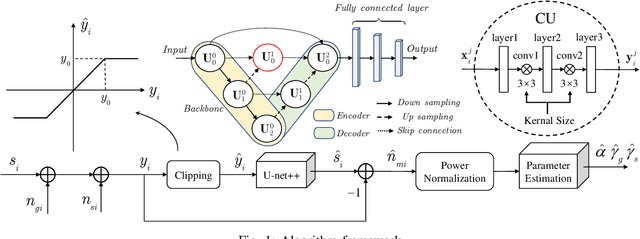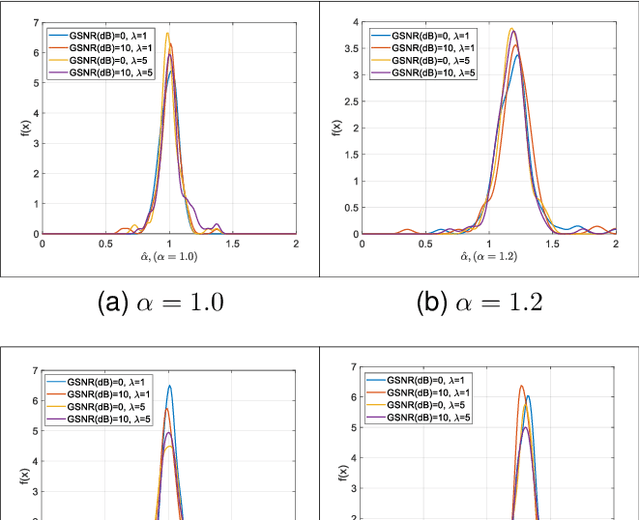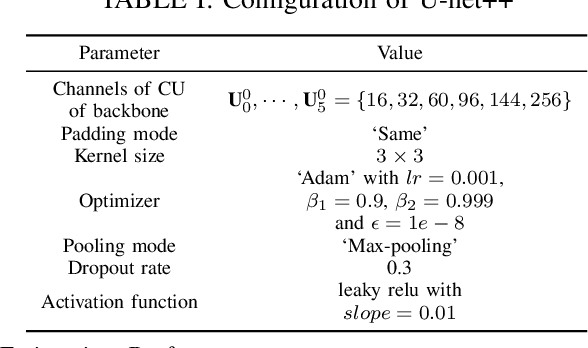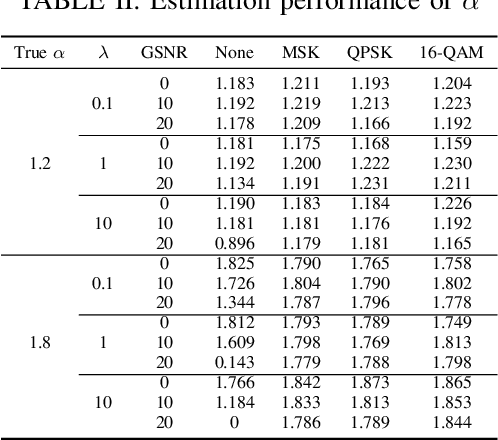Xiaonan Chen
Channel Capacity and Bounds In Mixed Gaussian-Impulsive Noise
Nov 15, 2023Abstract:Communication systems suffer from the mixed noise consisting of both non-Gaussian impulsive noise (IN) and white Gaussian noise (WGN) in many practical applications. However, there is little literature about the channel capacity under mixed noise. In this paper, we prove the existence of the capacity under p-th moment constraint and show that there are only finite mass points in the capacity-achieving distribution. Moreover, we provide lower and upper capacity bounds with closed forms. It is shown that the lower bounds can degenerate to the well-known Shannon formula under special scenarios. In addition, the capacity for specific modulations and the corresponding lower bounds are discussed. Numerical results reveal that the capacity decreases when the impulsiveness of the mixed noise becomes dominant and the obtained capacity bounds are shown to be very tight.
Communication under Mixed Gaussian-Impulsive Channel: An End-to-End Framework
Jan 19, 2023Abstract:In many communication scenarios, the communication signals simultaneously suffer from white Gaussian noise (WGN) and non-Gaussian impulsive noise (IN), i.e., mixed Gaussian-impulsive noise (MGIN). Under MGIN channel, classical communication signal schemes and corresponding detection methods usually can not achieve desirable performance as they are optimized with respect to WGN. Moreover, as the widely adopted IN model has no analytical and general closed-form expression of probability density function (PDF), it is extremely hard to obtain optimal communication signal and corresponding detection schemes based on classical stochastic signal processing theory. To circumvent these difficulties, we propose a data-driven end-to-end framework to address the communication signal design and detection under MGIN channel in this paper. In this proposed framework, a channel noise simulator (CNS) is elaborately designed based on an improved generative adversarial net (GAN) to simulate the MGIN without requirement of any analytical PDF. Meanwhile, a multi-level wavelet convolutional neural network (MWCNN) based preprocessing network is used to mitigate the negative effect of outliers due to the IN. Compared with conventional approaches and existing end-to-end systems, extensive simulation results verify that our proposed novel end-to-end communication system can achieve better performance in terms of bit-error rate (BER) under MGIN environments.
Parameter Estimation of Mixed Gaussian-Impulsive Noise: An U-net++ Based Method
Sep 06, 2022



Abstract:In many scenarios, the communication system suffers from both Gaussian white noise and non-Gaussian impulsive noise. In order to design optimal signal detection method, it is necessary to estimate the parameters of mixed Gaussian-impulsive noise. Even though this issue can be well tackled with respect to pure mixed noise, it is quite challenging based on the received single-channel signal including both transmitting signal and mixed noise. To mitigate the negative impact of transmitting signal, we propose a parameter estimation method by utilizing a neural network, namely U-net++, to separate the mixed noise from the received single-channel signal. Compared with existing blind source separation based methods, simulation results show that our proposed method can obtain rather better performance in terms of estimation accuracy and robustness under various scenarios.
 Add to Chrome
Add to Chrome Add to Firefox
Add to Firefox Add to Edge
Add to Edge